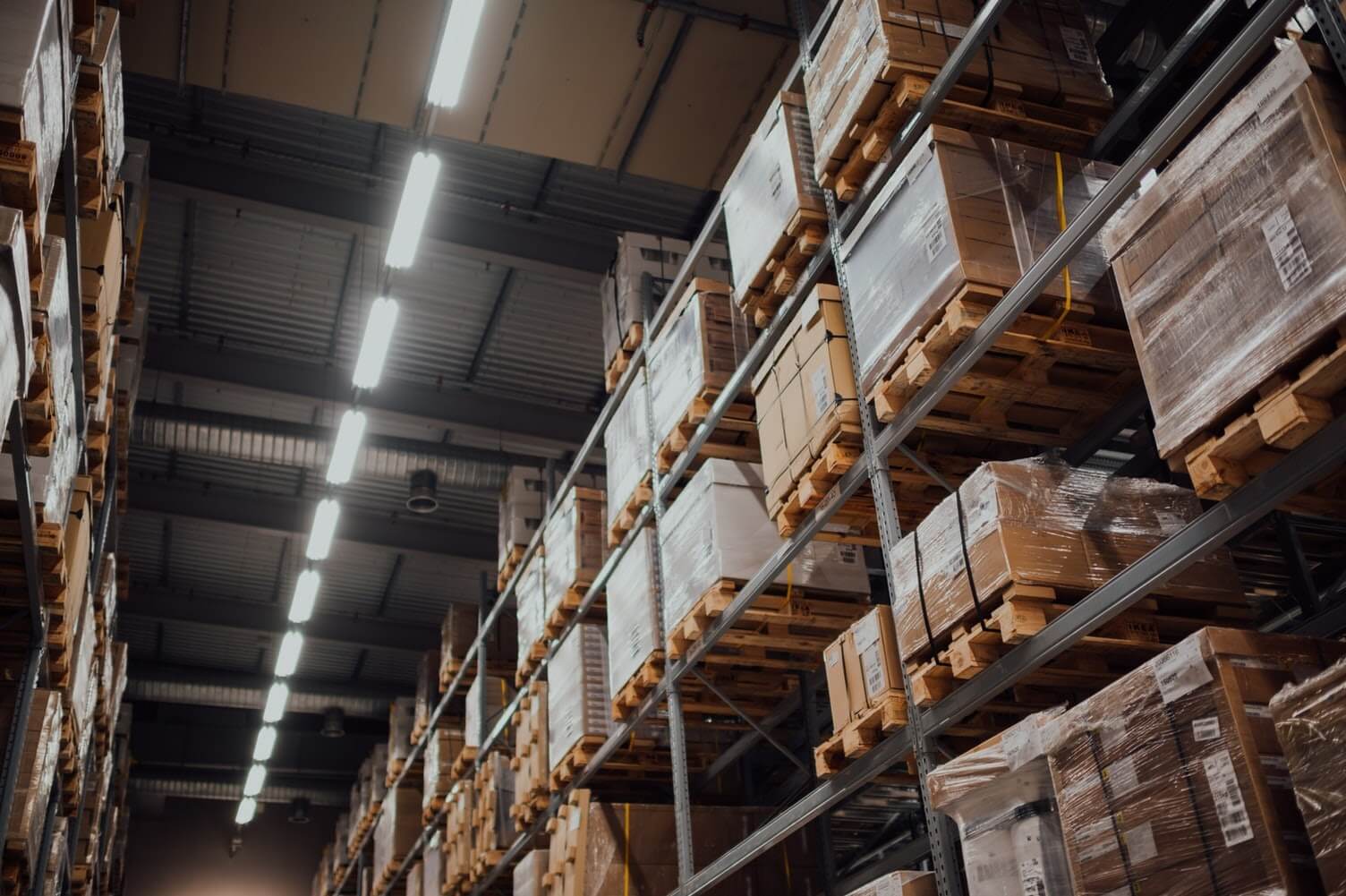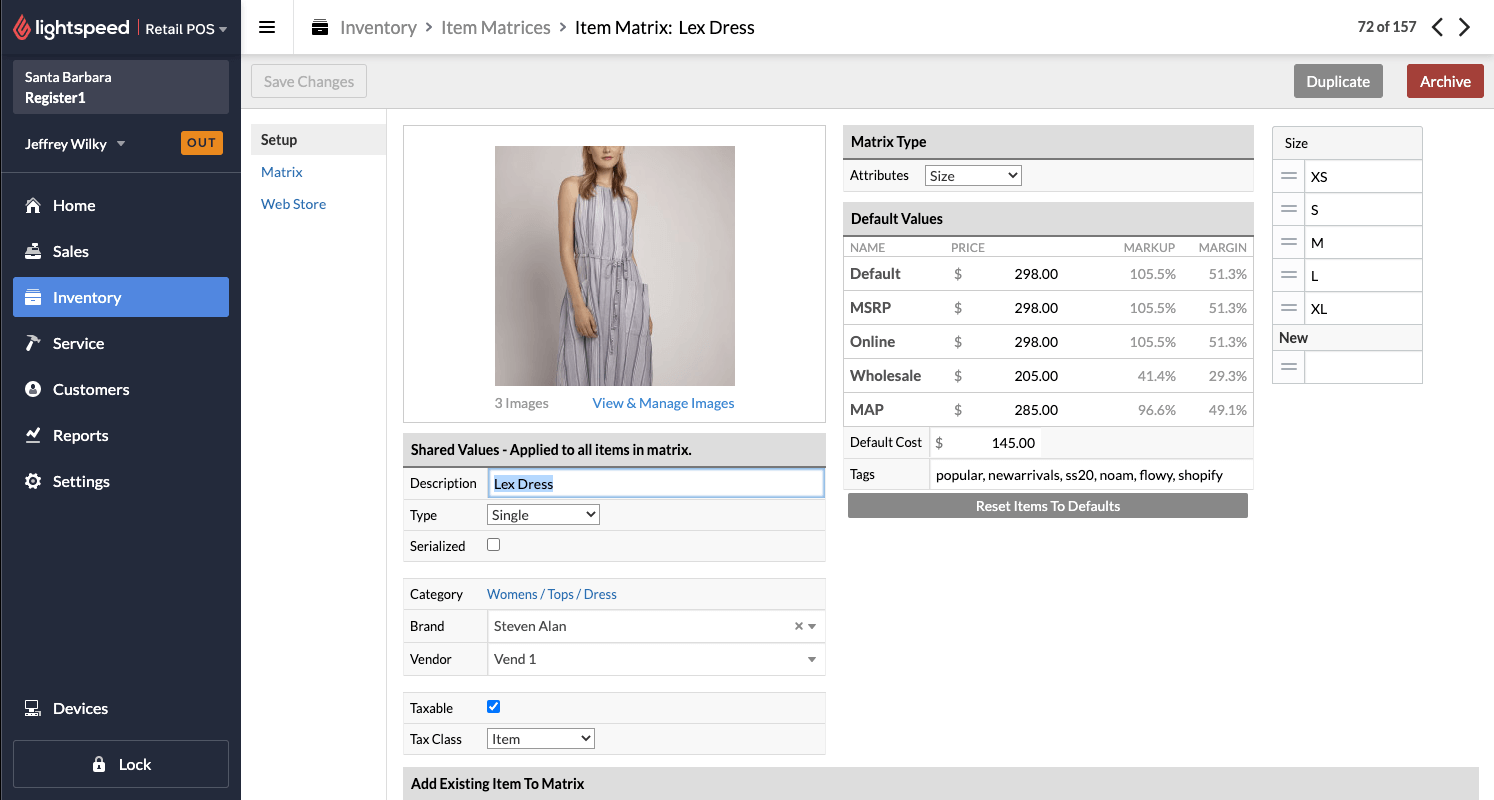
Without the right setup, retailers quickly run into problems keeping accurate and available inventory across all sales channels (i. e. multi-channel inventory management.)
This is particularly challenging for online/offline retailers, who usually need to juggle multiple channels and systems (e.g. POS, eCommerce, 3PL, and/or IMS) to manage their retail needs.
If these platforms don't maintain accurate information at all times, operational problems follow — which in turn leads to poor customer experience, increased costs, and overburdened team members.
We've created an in-depth post to help you find the right solution for your multi-channel inventory management needs — whether you're a small, mid-market, or enterprise retailer.
We'll cover topics including:
- The main challenges when managing inventory across multiple channels for online/offline retailers.
- The common solutions for multi-channel inventory management, and why these result in more problems and added complexity.
- How Accumula helps you overcome these challenges by distributing inventory information across all your retail systems in real-time.
Note: At Accumula, we built a solution specifically tailored to help you solve all your multi-channel inventory management needs, without adding complexity. If you would like to jump ahead and get started managing inventory across all your channels, book a demo today.
The Main Challenges You Need to Overcome When Managing Inventory Across Multiple Channels
As we mentioned above, retailers with both online stores and brick-and-mortar stores usually need multiple systems running in parallel to manage their retail needs. These include, but are not limited to:
- POS (Point of Sale) or Inventory Management Solution, such as Lightspeed
- eCommerce Solution, such as Shopify or Magento
- Order Shipment Management System, such as ShipStation
- 3PL (Third Party Logistics) System, such as Bleckmann Logistics
- ERP/WMS (Enterprise Resource Planning/Warehouse Management System), such as NetSuite
- Social and Online Marketplaces, such as Instagram, eBay and Amazon.
Retailers with some, or all, of these systems in play quickly realize that they are hard to integrate. If done poorly, this can result in two main issues:
- Lost sales. Items are marked as “out of stock” even though they are still available in the warehouse or in-store, resulting in lost sales. If your POS, webstore, and 3PL solutions don't share accurate data in real-time with each other, your inventory is effectively invisible, sitting on shelves gathering dust.
- Oversales. Poor multi-channel inventory management invariably leads to overselling, due to inventory existing in the online channel when being sold-out in-store, or vice versa.
Both of these problems lead to lost time and money — along with a terrible customer experience.
If inventory isn’t available, or you’re forced to constantly update your inventory data manually, you're not exposing all of your brands' inventory online and you're missing out on sales.
To solve the multi-channel inventory management issue, many retailers integrate their 3PL or WMS with their eCommerce business. Other retailers choose to use verticalized solutions, such as combining Shopify with Shopify POS. A third option is to use an IMS (inventory management system) and integrate it into your 3PL.
But these don't necessarily result in flawless multi-channel inventory management.
Next, we'll detail each of these potential solutions, and why they fail at helping you manage inventory across multiple channels.
The Common Solutions for Multi-Channel Inventory Management, and Why They Don't Work

1. Integrating Your 3PL or WMS with Your eCommerce Platform
Many 3PL or warehouse systems integrate directly to the online store, forcing all orders to be fulfilled through the warehouse.
The problem with this solution is that it greatly limits your brand's fulfillment capabilities.
You will not be able to offer your customers BOPIS (buy online, pick up in-store) or maximize inventory fulfilling online orders from your store without manual intervention.
This also means your customers won’t be able to easily see what is available in store and you won’t be able to ship from the store due to your fulfillment being siloed in different systems.
Brands like Target fulfilled 95% of their online orders from stores during 2020. Customers now expect this level of service and visibility.
2. Vertically-Integrated Systems
The third solution retailers commonly implement to do multi-channel inventory management is the use of verticalized systems, two examples being Lightspeed's eCommerce and Shopify POS.
Vertically-integrated systems are easy to implement come with some clear limitations. Because they are "all-in-one", certain elements can be less extendable. Some platforms offer limited inventory management without a configurable Safety Stock or limited order management (sometimes no order management at all.)
If a 3PL is directly involved, the problem still isn't solved because, as we mentioned above, most 3PL services are built to download all orders and feed them straight into your warehouse, which makes store fulfillment difficult without manual intervention.
3. Inventory Management Systems
Inventory Management Systems are “single-source of truth” platforms; they integrate with your digital channels and your warehouses to pool all your inventory data together in a dashboard you can use to manage all your inventory needs.
Though IMS might look like the perfect solution, they come with a substantial hidden cost: your entire team needs to learn yet another piece of software.
In an industry like retail, with such high staff turnover, this means you would be forced to constantly train and retrain staff members. And if you choose to train just one person to manage your IMS, you're at risk of that employee leaving, and having to start over from scratch.
Additionally, you’ll be forced to manage your in-store inventory in the IMS only, and import those transactions into other systems, rather than doing it naturally and seamlessly in your POS or ERP.
In other words, inventory management will turn into an additional task — instead of simply having that inventory data distributed automatically across all other platforms.
|
What does solve the problem, though, is a distributed truth solution, such as Accumula. |
Below, we'll explain exactly how.
How Accumula Helps You Bypass the Challenges of Multi-Channel Inventory Management through Distributed Truth
Accumula connects all your chosen retail solutions and distributes truth about inventory and orders in real-time, without any intervention or input on your part.
With Accumula, you don't need to worry about multiple channels anymore, or about inventory being insufficient or incorrect. This helps you avoid lost sales and overselling, which leads to a poor shopping experience for your customers.
All you need to do is add a specific tag to your inventory, and Accumula will continuously distribute those products' data across your different platforms through automation.
 Accumula publishes products to digital channels by simply tagging the item in a point of sale, such as Lightspeed.
Accumula publishes products to digital channels by simply tagging the item in a point of sale, such as Lightspeed.
Accumula allows you to take advantage of several benefits that would otherwise be out of reach.
For example, you can use real-time inventory data to provide a seamless BOPIS experience for your customers that rivals the big chains — without the added complexity and cost of trying to integrate an order management system (OMS) and an inventory management software (IMS) with your fulfillment solution.
But there are many more benefits you unlock when using Accumula to distribute inventory truth across your retail platforms, including:
- Find-in-store display of inventory on your online store to drive store traffic and promote customer confidence. This is another standard offering from the big chains that customers now expect everywhere.
- Add safety buffers to your stock levels. Add thresholds to control inventory and reduce the risk of stockouts to almost zero.
- Lower training overhead. No wasted time training employees on an Inventory Management System they aren't familiar with. This eliminates added expenses, human errors, and bypasses the risk of losing that one person on your team that knows how to use your IMS.
- Turn your offline stores into shipping centers and optimize online inventory availability by surfacing hidden inventory.
- Automatically receive alerts both in-store and in your order fulfillment center when a new order comes in, be it for shipping or pick-up. This allows your staff to always be aware when new orders come in. They can prepare the order, print shipping labels if necessary, and make sure it gets fulfilled as quickly as possible.
Accumula, in short, is a headless solution that works 24/7 to distribute your inventory information across platforms so you can focus on the only channel that matters: your customer.
Manage All Your Multi-Channel Inventory Needs and Provide a Seamless Omnichannel Experience for Your Customers
Today, customer expectations are extremely high, which makes effective multi-channel inventory management more important than ever.
If your inventory data is not completely visible and consistently updated, you won’t be able to capitalize on your site traffic or seamlessly offer BOPIS to your customers. You will be stuck with limited inventory visibility, or using a solution that doesn’t meet your inventory management needs — leading to lost sales and poor customer retention.
With Accumula, you can automate and streamline your inventory management to create an omnichannel customer experience that rivals big stores like Walmart and Target.
Book a demo today to see how Accumula can help you make hidden products available, and keep all your inventory data true and up-to-date across all platforms — using one simple integration.
